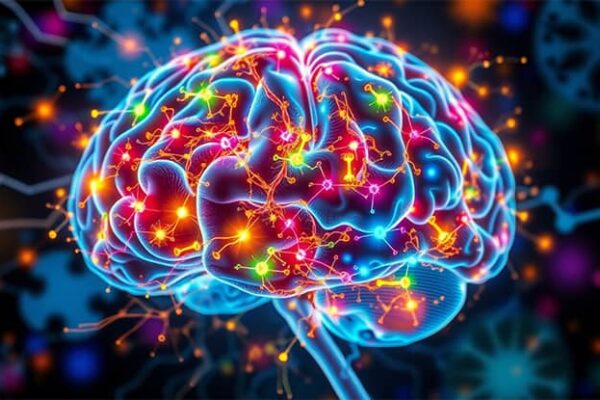Psychodynamic therapy is one of the most influential approaches in psychotherapy, with roots that extend deeply into the history of psychoanalysis. This method for treating psychological disorders and personal issues is based on understanding the deep processes of the human psyche and their impact on behavior and emotional well-being.
Psychodynamic therapy is a form of in-depth psychological work focused on exploring unconscious processes, childhood experiences, and interpersonal relationships that influence one’s current state and behavior. The goal of this approach is to help clients become aware of the hidden motives behind their behavior, resolve inner conflicts, and achieve a deeper self-understanding.
The history of psychodynamic therapy is inextricably linked with the name of Sigmund Freud, the founder of psychoanalysis. However, since its inception in the late 19th century, this approach has undergone significant changes and evolved into various schools and directions.

Theoretical Foundations
The human psyche is a complex system, similar to an iceberg, where only a small part is visible on the surface, while the greater part is hidden underwater. This metaphor aptly illustrates the essence of psychodynamic theory, which seeks to explore the deep layers of the conscious and unconscious mind.
Like an archaeologist unearthing ancient artifacts, a psychodynamic therapist helps the client bring forgotten memories, suppressed emotions, and hidden motives to the surface. This process can be challenging and sometimes painful, but it is necessary for understanding the origins of current psychological issues.
The theoretical foundation of psychodynamic therapy can be compared to the root system of a tree: hidden from sight, it nourishes and supports everything visible above ground. Understanding these roots is key to effective therapeutic work.
The Influence of Sigmund Freud’s Work
Sigmund Freud laid the foundation of psychodynamic theory by developing the concept of the unconscious and proposing a model of the psyche consisting of three components: the Id (unconscious impulses and desires), the Ego (the rational part of the psyche), and the Superego (moral standards and values). Freud asserted that much of our behavior is motivated by unconscious processes and that psychological issues arise from conflicts between these psychic structures.
Freud’s theory of psychosexual development, which suggests that personality forms during the early years of life through specific developmental stages, also became a cornerstone of the psychodynamic approach. This theory emphasizes the importance of early childhood experiences in shaping personality and the emergence of psychological problems in adulthood.
Key Concepts
The key concepts of psychodynamic therapy are akin to fundamental laws of physics in psychology. They describe invisible forces that shape our thoughts, feelings, and behavior, creating a unique “psychic gravity” for each individual. Understanding these concepts allows the therapist to navigate the intricate landscape of the human psyche, just as knowledge of physical laws enables an engineer to create complex structures.
These concepts can be compared to lenses through which the psychotherapist examines the client’s inner world. Each lens focuses on a specific aspect of mental life, revealing what is typically hidden from the untrained eye. Together, they create a multidimensional view of human personality, exposing complex connections between past and present, conscious and unconscious, inner world and outward behavior.
The Unconscious
The concept of the unconscious is central to psychodynamic therapy. The unconscious represents that part of the psyche inaccessible to our conscious awareness, yet significantly influences our thoughts, feelings, and behaviors. In the unconscious, repressed memories, suppressed desires, and traumatic experiences are stored, which can manifest as symptoms, dreams, or slips of the tongue.
Defense Mechanisms
Defense mechanisms are unconscious psychological strategies used by the Ego to protect itself from anxiety and threats to self-esteem. The most well-known defense mechanisms include:
- Repression: removing unacceptable thoughts or memories from consciousness.
- Projection: attributing one’s own undesirable qualities or impulses to others.
- Rationalization: finding logical explanations for irrational behavior.
- Denial: refusing to acknowledge a painful reality.
- Sublimation: redirecting unacceptable impulses into socially acceptable activities.
Understanding and analyzing defense mechanisms play an important role in psychodynamic therapy, helping clients to become aware of their true feelings and motivations.
Transference
Transference is a process where the client projects feelings, attitudes, and expectations associated with significant figures from their past (usually parents) onto the therapist. This allows the recreation and working through of patterns formed in childhood within the therapeutic relationship. Analyzing transference is a powerful tool for understanding and altering dysfunctional relationship patterns in the client’s life.

Fundamental Principles of Psychodynamic Therapy
The principles of psychodynamic therapy can be compared to a compass that guides the therapist and client on their joint journey through the labyrinths of the psyche. They help to navigate the complex landscape of human emotions, thoughts, and behavior.
The Role of Past Experiences in Shaping Personality
Psychodynamic therapy places great importance on the influence of early childhood experiences in forming personality and the emergence of psychological issues in adulthood. According to this approach, many of our current behavioral patterns, emotional reactions, and relationships with others originate in childhood.
The therapist helps the client explore their past, especially relationships with parents and other significant figures, to understand the origins of current problems. This may include analyzing traumatic events, emotional deprivations, or conflicts that affected the client’s personality development.
The Importance of Unconscious Processes
Psychodynamic therapy is based on the assumption that much of our behavior and emotional responses are motivated by unconscious processes. These processes may include repressed memories, suppressed desires, internal conflicts, and unresolved childhood traumas.
The therapist’s task is to help the client become aware of these hidden aspects of their psyche through dream analysis, free associations, interpretation of slips of the tongue, and other manifestations of the unconscious. Awareness of unconscious motives and conflicts is considered a crucial step toward psychological healing and personal growth.
The Significance of the Therapeutic Relationship
In psychodynamic therapy, the relationship between client and therapist is regarded as a crucial therapeutic tool. This relationship creates a safe space where the client can explore their deepest feelings, fears, and desires.
The therapeutic relationship also serves as a model for analyzing the client’s interaction patterns with others. Through the processes of transference and countertransference, problematic aspects of the client’s relationships are recreated and processed, enabling a deeper understanding and transformation.

Psychodynamic Therapy: Techniques and Methods
The toolkit of a psychodynamic therapist can be compared to a set of delicate surgical instruments. Each method is designed to work with a specific aspect of the psyche, and skillful use of these tools requires mastery and experience.
The techniques of psychodynamic therapy are like keys that unlock various doors to the client’s subconscious. Some of these doors have been locked for years or even decades, and opening them may lead to unexpected insights.
Free Association
The free association method, first introduced by Freud, is one of the main techniques of psychodynamic therapy. The client is encouraged to say everything that comes to mind without censorship or attempting to structure their thoughts. The goal of this method is to bypass conscious control and access unconscious material.
The therapist listens attentively, noting themes, repeating patterns, and emotional reactions. Analyzing this material helps reveal hidden conflicts, suppressed desires, and unconscious fears of the client.
Dream Analysis
Dreams in psychodynamic therapy are regarded as the “royal road to the unconscious.” Dream analysis provides access to deep aspects of the client’s psyche that do not manifest in the conscious state.
The process of dream analysis usually includes:
- A detailed description of the dream by the client.
- Exploring the client’s associations with different elements of the dream.
- Analyzing the symbolism and hidden meaning of dream images.
- Interpreting the dream in the context of the client’s current life situation and psychological issues.
It is important to note that in modern psychodynamic therapy, dream interpretations are not imposed on the client but developed jointly through dialogue.
Interpretation
Interpretation is a key tool in psychodynamic therapy. It involves explaining or clarifying the meaning of the client’s behavior, thoughts, feelings, or dreams within the context of their unconscious processes and past experiences.
The goal of interpretation is to help the client become aware of hidden aspects of their psyche and see connections between past experiences and current problems. Effective interpretation should be:
- Timely (offered at the right moment).
- Empathetic (considering the client’s emotional state).
- Deep (addressing significant aspects of the psyche).
- Testable (open to discussion and refinement).
Working with Transference and Countertransference
Analyzing transference and countertransference is a unique aspect of psychodynamic therapy. Transference occurs when the client projects feelings and expectations associated with important figures from their past onto the therapist. This allows old conflicts and relationship patterns to be “brought to life” and worked through in the safe therapeutic space.
Countertransference refers to the therapist’s emotional reactions to the client. Analyzing these reactions can provide valuable insights into the client’s unconscious processes and the dynamics of the therapeutic relationship.
Working with transference and countertransference requires a high level of professionalism and self-awareness from the psychotherapist. It allows for deep insights and changes in the client’s ways of interacting with others.

The Process of Psychodynamic Therapy
Psychodynamic therapy is more of a marathon than a sprint, requiring endurance, patience, and consistent work from both the client and the therapist. It’s a journey that may take months or even years, with many twists and turns along the way.
Like building a house, psychodynamic therapy begins with establishing a solid foundation of trust and mutual understanding. On this basis, walls of insight and self-awareness are gradually built, forming a roof of new behavioral patterns and emotional self-regulation.
The therapeutic process can be likened to untangling a complex knot of threads. Sometimes, it may feel like the knots only grow tighter, but with patience and careful work, even the most difficult emotional knots can be unraveled.
Initial Phase
The initial phase of psychodynamic therapy usually includes these stages:
- Establishing the therapeutic alliance: Building a trusting relationship between the client and therapist.
- Collecting a case history: Thoroughly reviewing the client’s life story, including childhood experiences, family relationships, significant events, and traumas.
- Identifying problems and goals: Outlining key psychological issues and setting therapeutic goals.
- Explaining the therapy process: Informing the client about the methods, duration, and frequency of sessions.
In this stage, the therapist aims to create an atmosphere of safety and acceptance so the client can freely express thoughts and feelings.
Middle Phase
The middle phase is the longest and most intensive part of psychodynamic therapy. It is characterized by:
- In-depth exploration of unconscious processes through dream analysis, free association, and interpretation.
- Working with transference: Analyzing the client’s feelings and reactions to the therapist as a reflection of their relationships with others.
- Processing childhood traumas and conflicts: Examining how past experiences influence current issues.
- Analyzing defense mechanisms: Recognizing and understanding ways the client protects themselves from anxiety and painful emotions.
- Developing insight: Helping the client recognize connections between past and present, between unconscious processes and conscious behavior.
In this phase, clients may experience strong emotional responses, resistance, and temporary worsening of symptoms, which is considered a normal part of the therapeutic process.
Final Phase
The final phase of psychodynamic therapy includes:
- Consolidating changes: Strengthening new ways of thinking and behaving.
- Processing feelings related to ending therapy: Discussing emotions that arise as the therapeutic relationship comes to a close.
- Planning for the future: Discussing strategies for maintaining results and continuing personal growth.
- Reviewing progress: Reflecting on the journey and goals achieved.
Ending therapy can be an emotional process for both the client and therapist. It’s important to allocate enough time to process this stage for a successful therapeutic conclusion.

Applications of Psychodynamic Therapy
Psychodynamic therapy is like a master key that can unlock various aspects of the human psyche. Its application is not limited to treating specific symptoms but aims at a profound transformation of personality.
The areas of psychodynamic therapy can be compared to a diverse ecosystem, where each problem type requires a unique approach. From the dense jungles of complex personality disorders to the deserts of emotional exhaustion, this method adapts to different psychological landscapes.
Psychodynamic therapy is used in various areas of human life – from resolving individual psychological issues to improving interpersonal relationships and professional life.
Mental Disorders
Psychodynamic therapy is effectively applied in treating various mental disorders, including:
- Depression: Helps reveal and work through deep-rooted causes related to childhood trauma, losses, and unresolved conflicts.
- Anxiety disorders: Explores unconscious sources of anxiety and develops more adaptive ways to overcome it.
- Personality disorders: Assists clients in understanding the origins of dysfunctional behavior and relationships, facilitating profound personal changes.
- Post-traumatic stress disorder (PTSD): Allows the processing of traumatic experiences and their impact on current functioning.
- Eating disorders: Explores deep-seated emotional issues underlying eating behaviors.
- Psychosomatic disorders: Encourages understanding the connection between psychological conflicts and physical symptoms.
Interpersonal Issues
Psychodynamic therapy is particularly effective in addressing various interpersonal issues:
- Difficulties in forming close relationships: Helps identify and change dysfunctional patterns formed in childhood.
- Family relationship conflicts: Promotes understanding of each family member’s role in conflicts and finding new ways to interact.
- Professional relationship problems: Aids in recognizing unconscious motives influencing behavior at work.
- Social anxiety and isolation: Examines deep-seated fears and insecurities hindering social interactions.
- Recurring destructive relationship patterns: Assists in understanding and changing unconscious scenarios leading to unsuitable partners or repeating negative situations.
Personal Growth
Beyond treating specific disorders, psychodynamic therapy is often used for personal growth and self-awareness:
- Developing self-awareness: Helps in gaining deeper understanding of thoughts, feelings, and motivations.
- Improving emotional regulation: Enhances the ability to manage emotions better.
- Boosting creativity: Working with the unconscious can stimulate creative potential.
- Finding life meaning: Allows exploration of deep values and life goals.
- Improving self-esteem: Fosters a healthier and more realistic self-image.
- Building empathy: By understanding one’s own psychological processes, the ability to understand others is improved.

Effectiveness and Research
Assessing the effectiveness of psychodynamic therapy is like measuring the depth of an ocean – a complex task requiring specialized tools and methods. Traditional research methods may not always capture the subtle yet meaningful changes that occur in therapy.
The effectiveness of psychodynamic therapy often manifests not only in symptom reduction but also in significant life quality improvements. It’s akin to restoring an ecosystem: results may not be immediately visible but gradually lead to deep, lasting changes.
Research Overview
Despite its long history and broad application, the effectiveness of psychodynamic therapy has long been debated. However, recent decades have seen numerous studies confirming its effectiveness:
- A meta-analysis by Leichsenring and Rabung (2008) showed that long-term psychodynamic psychotherapy is effective for treating complex mental disorders, solving targeted issues, and promoting personal development.
- Shedler’s (2010) study demonstrated that the effects of psychodynamic therapy not only persist after treatment ends but often increase over time.
- A meta-analysis by Abbass et al. (2014) confirmed the effectiveness of short-term psychodynamic psychotherapy for a wide range of common mental disorders.
- Research by Fonagy et al. (2015) validated the effectiveness of psychodynamic therapy for treating depression, anxiety, and personality disorders.
These and other studies provide compelling evidence of psychodynamic therapy’s effectiveness, particularly for complex and chronic psychological issues.
Comparison with Other Therapeutic Approaches
Compared to other forms of psychotherapy, psychodynamic therapy demonstrates these results:
- Compared to cognitive-behavioral therapy (CBT), psychodynamic therapy shows similar effectiveness in treating depression and anxiety but may be more effective for clients with complex issues and personality disorders.
- Research indicates that psychodynamic therapy is especially helpful for clients who have not responded well to other treatments, including medication.
- Unlike CBT, which focuses on changing specific thoughts and behaviors, psychodynamic therapy aims for deeper personality changes, leading to more lasting results.
- Psychodynamic therapy is particularly effective for interpersonal issues and improving relationship quality, which is not always a direct focus of other approaches.
- Some studies suggest that combining psychodynamic therapy with other approaches (e.g., CBT or medication) can be especially beneficial for some clients.

Criticism and Limitations of Psychodynamic Therapy
Criticism of psychodynamic therapy often resembles debates on the merits of classical music in the era of pop culture. Its depth and complexity can seem excessive in a world focused on quick fixes and immediate results.
The limitations of the psychodynamic approach are like those of deep-sea diving. Not everyone is ready or able to dive so deeply into self-awareness, and this process requires special training and support.
Debates around psychodynamic therapy reflect a broader discussion about the nature of the human psyche and the healing process, similar to debates between holistic and allopathic medicine, where each approach has its strengths and weaknesses.
Main Critical Remarks
Despite its popularity and effectiveness, psychodynamic therapy faces several critical remarks:
- Insufficient empirical basis: Critics argue that many concepts within psychodynamic theory are difficult to empirically validate.
- Duration and cost: Traditional psychoanalysis can be lengthy and costly, making it inaccessible for many individuals.
- Subjectivity of interpretations: Some critics believe that therapists’ interpretations can be overly subjective and not always accurate.
- Focus on the past: Excessive attention to childhood experiences may detract from addressing a client’s current issues.
- Complexity of concepts: Certain theoretical constructs in psychodynamic theory can be challenging to understand and apply in practice.
Limitations of Application
Psychodynamic therapy may not be the optimal choice for:
- Acute crisis situations requiring immediate intervention
- Severe mental disorders, such as acute psychoses or severe bipolar disorder
- Clients seeking short-term, symptom-focused treatment
- Individuals with limited cognitive abilities or low introspective capacity
- Situations requiring immediate behavioral change (e.g., addictive behaviors)
- Clients unwilling or unprepared to explore their past and deep emotional processes

Contemporary Trends and Modifications
The evolution of psychodynamic therapy resembles the development of jazz music—staying true to its roots while constantly improvising and adapting to new realities. Modern modifications broaden the therapeutic toolkit, making the approach more flexible and responsive to clients’ needs.
New trends in psychodynamic therapy reflect a general shift toward personalization in medicine and psychology. Just as modern technology enables tailored treatment plans in medicine, psychodynamic therapy aims to fine-tune the therapeutic process to meet the unique needs of each client.
Short-Term Psychodynamic Therapy
In response to criticisms regarding the duration and cost of traditional psychoanalysis, several short-term forms of psychodynamic therapy have been developed:
- Short-Term Dynamic Psychotherapy (STDP): Focuses on addressing a specific issue within a set time frame (usually 12 to 40 sessions).
- Intensive Short-Term Dynamic Psychotherapy (ISTDP): Utilizes a more active and confrontational approach to access deep emotions and conflicts quickly.
- Dynamic Interpersonal Therapy (DIT): A short-term approach focused on improving interpersonal relationships, particularly effective in treating depression.
These short-term approaches retain the core principles of psychodynamic theory but adapt them to achieve therapeutic goals more swiftly.
Integration with Other Approaches
Modern psychodynamic therapy often incorporates elements from other therapeutic orientations:
- Mentalization-Based Therapy (MBT): Combines psychodynamic principles with elements of cognitive therapy and attachment theory.
- Transference-Focused Psychotherapy (TFP): Integrates classic psychoanalysis with modern object relations theory for treating borderline personality disorder.
- Psychodynamically-Oriented Cognitive Therapy: Merges the insight-oriented approach of psychodynamic therapy with cognitive-behavioral therapy techniques.
- Psychodynamic Body Therapy: Incorporates bodywork into the psychodynamic process, acknowledging the significance of bodily sensations and expressions.
These integrative approaches aim to harness the strengths of various therapeutic modalities to enhance treatment effectiveness.

Conclusion
Psychodynamic therapy, despite its long history, continues to evolve and adapt to the demands of contemporary psychotherapeutic practice. Its core principles—exploring the unconscious, analyzing transference and countertransference, focusing on early relationships and their influence on current personality dynamics—remain a unique and valuable contribution to the field of psychotherapy.
Modern research supports the effectiveness of psychodynamic therapy in treating a wide range of psychological issues, particularly complex and chronic disorders. The development of short-term therapy forms and integration with other approaches has made psychodynamic therapy more accessible and applicable in diverse clinical contexts.
The future of psychodynamic therapy is likely to be marked by further integration with neurobiological research, the development of empirically validated treatment methods, and adaptation to society’s evolving mental health needs. Yet its fundamental goal—to help individuals achieve profound self-understanding and personal growth—remains unchanged.




